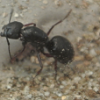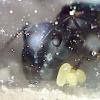Looking for ants has some things in common, but there do seem to be small differences depending on your location. Especially if you have snow for more than half of the year. So I made a video on how I have found many queens and colonies in Alberta, Canada.
The biggest difference is that with snow during the winter, the ground doesn't dry out and many founding queens will only dig their chamber a few inches deep. I have found quite a few queens under rocks and bits of wood.























